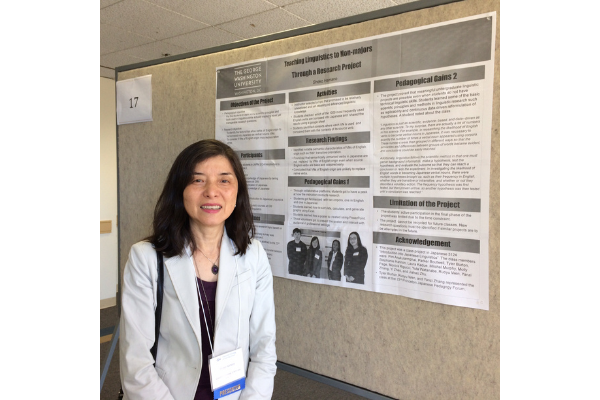
The Institute for Japanese Studies presents:
"From Pan ‘Bang’ to Kitto ‘Surely’: Mimetic Expressions in Japanese (and Korean)"
Shoko Hamano
George Washington University
Abstract: Most intermediate Japanese students will learn some Japanese mimetic expressions such as bikkuri-suru ‘to be surprised’ and niko-niko suru ‘to smile’ as lively and interesting expressions. However, the systematicity of Japanese mimetics is hardly ever presented in language classes even though a considerable understanding of Japanese mimetics has accumulated and is available now. Decades ago, the perception of Japanese mimetics in linguistics was also like this. Mimetics were curious peripheral oddities in the minds of many linguists. In this lecture, I will describe how the perception has changed in linguistics and how systematic and worthy of serious study Japanese mimetics are. In this process, I will also briefly touch on the similarities between Japanese mimetics and Korean mimetics and their implications. Lastly, I will point out the need to teach Japanese mimetics as a system rather than as a collection of disparate vocabulary.
Download PDF flyer here: Shoko Hamano
Shoko Hamano, Professor of Japanese and International Affairs, has been teaching at the George Washington University in Washington, DC since 1993. Her primary research interests are in the areas of Japanese language pedagogy and ideophones, or mimetic expressions. In addition to pedagogical Japanese grammars, she has published such works as Nihongo no onomatope: Onshoochoo to koozoo [Onomatopeia in Japanese: Sound Symbolism and Structure] (Kurosio, 2014), “Voicing of Obstruents in Old Japanese: Evidence from the Sound-Symbolic Stratum,” Journal of East Asian Linguistics 9 (2000), and The Sound-Symbolic System of Japanese (CSLI, 1998). The 1998 book is considered to have ushered in rigorous linguistic studies of Japanese mimetic expressions. Recently, she has expanded her research to Korean sound symbolism. This year, she published “Ideophones in Japanese and Korean” in The Handbook of Asian Linguistics, Chris Shei and Saihong Li (eds.) (Routledge, 2022).
